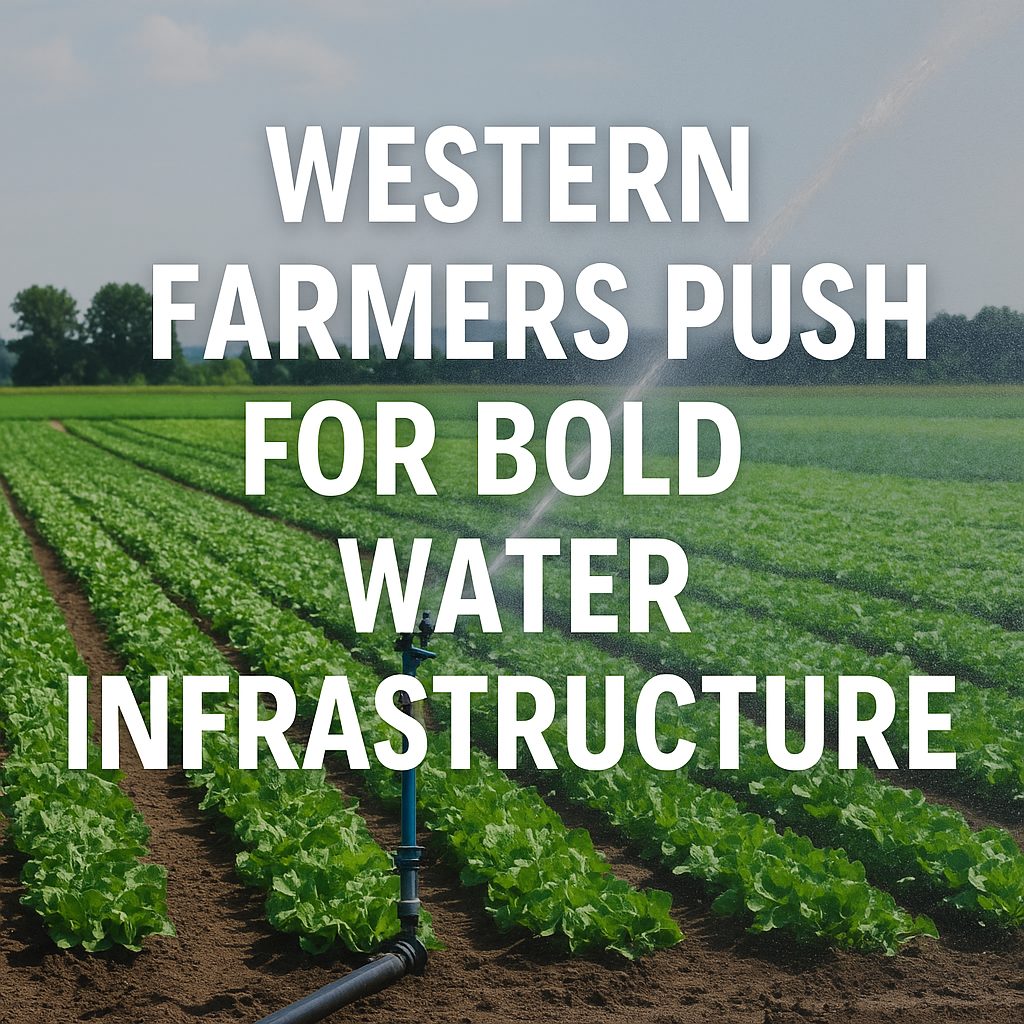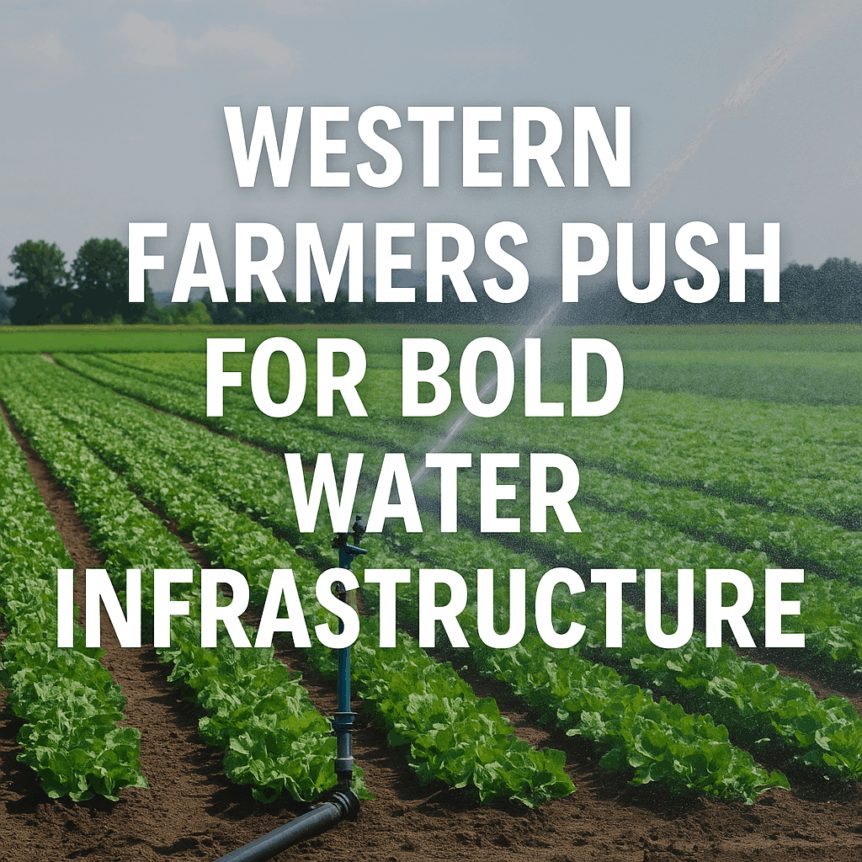Urban Growth vs. Agricultural Water Use in the Desert Southwest

Despite Arizona’s explosive population growth—from 1.3 million in 1957 to more than 7 million residents today—the state’s total water use has remained largely unchanged at around 7 million acre-feet per year. This stability in consumption masks a dramatic shift in allocation. As urban water use has risen, agriculture’s share has diminished, prompting farmers to become more efficient stewards of this vital resource.
Nick Papagni, “The Ag Meter,” sat down with Andrew Leimgruber, a grower in California’s Imperial Valley, to explore water issues facing desert agriculture and broader questions about the future of water infrastructure in the West.
Leimgruber: Let’s Stop Choosing Limits and Start Building Solutions
Leimgruber notes a troubling trend in the public narrative: pitting agriculture against urban interests.
“So often news media and politicians want to pit us against each other,” he says. “You know, I shouldn’t be growing alfalfa in Southern California, and well, oh, Palm Springs shouldn’t have 110 golf courses.”
Rather than viewing water allocation as a zero-sum game, Leimgruber believes the conversation should shift to innovation and expansion. He points out that much of the West is still relying on infrastructure planned and built in the 1950s and 1970s—a time when both the population and technological capabilities were drastically different.
“Why can’t we be the generation that landed on the moon and have these new ambitious ways of augmenting our water supply?”
A Vision for a Multi-State Water Infrastructure Network
Leimgruber advocates for forward-thinking, large-scale water projects reminiscent of past feats such as the California State Water Project. Among the ideas he proposes:
- Redirecting Missouri and Mississippi River water toward Denver to reduce that region’s reliance on the Colorado River by as much as 2 million acre-feet.
- Linking the Snake River to the Colorado River to support western agriculture and municipal needs.
- Bringing Columbia River water south from Oregon and Washington to supplement California’s supply.
These kinds of bold initiatives, Leimgruber argues, would allow western states to sustain growing urban populations while protecting the agricultural output that feeds much of the nation.
Coexistence Is the Goal
“If so, much of our population wants to live in Phoenix or Palm Springs or Las Vegas, we should have the water available so they can live and have a good lifestyle, and we can still continue to farm and produce the food they rely on.”
Rather than choosing between people and crops, Leimgruber believes we can choose both—with vision, commitment, and investment.
Listen to the Full Interview
Hear more from Andrew Leimgruber in his extended conversation with Nick Papagni, where they dig deeper into critical issues impacting agriculture across the western United States.
Nick Papagni, reporting for AgNet West.










